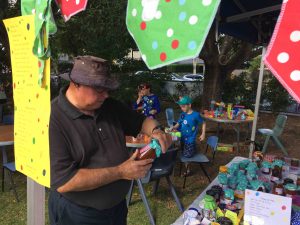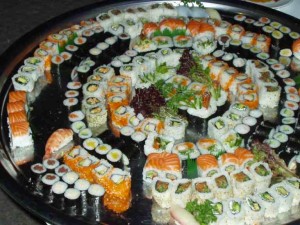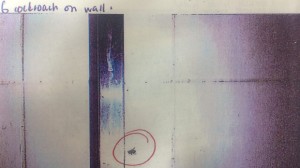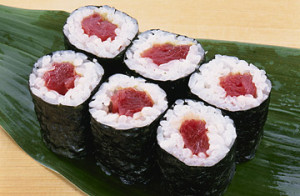Grey nomading is a term I never heard until I came to Australia.
Same with fete.
 A grey nomad is “a retired person who travels independently and for an extended period within their own country, particularly in a caravan or motor home.”
A grey nomad is “a retired person who travels independently and for an extended period within their own country, particularly in a caravan or motor home.”
My retired friend Rod, previously with the New South Wales Food Authority, and his wife Alison were grey nomading by BrisVegas on Sunday, so I took them to Sorenne’s school fete, featuring a petting zoo, homemade foods and a host of microbiological hazards.
As we passed the sushi stall, we looked at each other and silently shook our heads, no.
Darcy Spears of KTNV in Nevada reports, the annual River Run, which brings tens of thousands of people to Laughlin from Las Vegas and elsewhere, a Laughlin sushi bar will be recovering from a 33-demerit C grade.
The sushi bar at Minato Japanese and Korean restaurant on South Casino Drive in Laughlin is back on Dirty Dining for the second time.
Darcy: And we’d just like to get your side of the story from whoever is in charge.
Person in charge: Um, sorry, right now we’re not available for that.
Darcy: You’re not available? But you’re standing right in front of me. You look available.
Person in charge: I mean, you say you need a person in charge, right?
Darcy: Yes. And so of course if the restaurant’s open there has to be someone in charge on property.
 Person in charge: Well, I’m in charge but you need someone probably a little higher than me for this kind of thing.
Person in charge: Well, I’m in charge but you need someone probably a little higher than me for this kind of thing.
Darcy: If you need to call someone you can. We just want to make sure we give you guys the chance to tell customers why you guys happened to get the most demerits of all the inspected restaurants last week, and, a lot of stuff in here seems to indicate with temperature issues that the sushi could be potentially unsafe and we like to make sure you have the chance to comment on that.
Person in charge: Um, no thanks. I’ll decline.
Inspectors found sushi rice and shredded crab left out on the counter at unsafe temperatures.
Ground mixed tuna and shrimp were also in the temperature danger zone.
There weren’t roaches running around or expired food, but there was a lot of issues with temperatures and handwashing and things that could spread foodborne illness.
Food safety is what happens when people pay attention.










